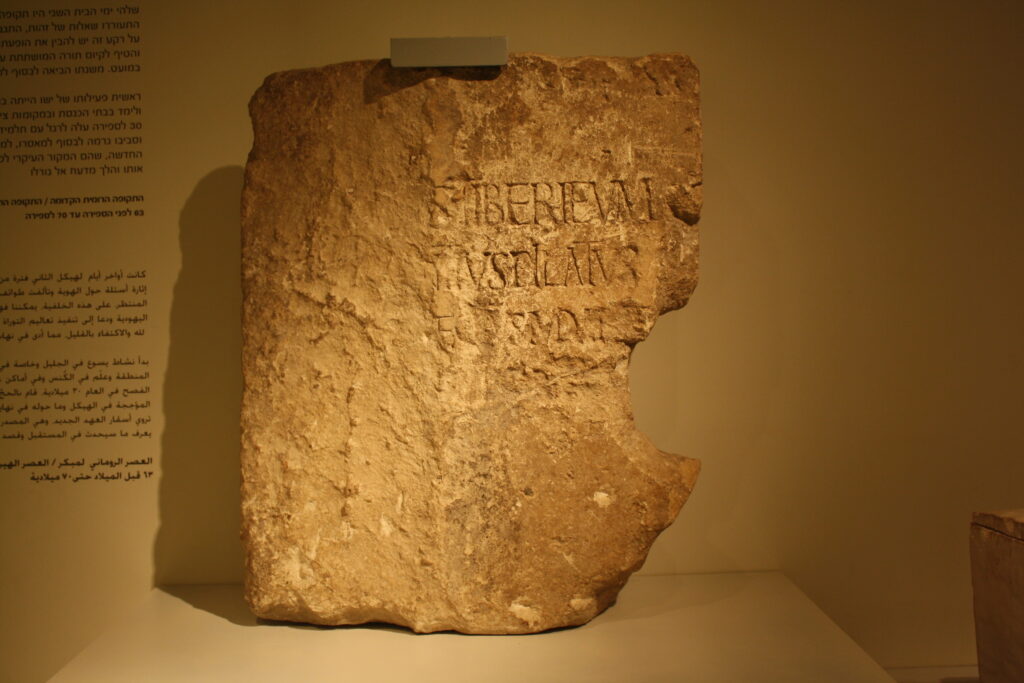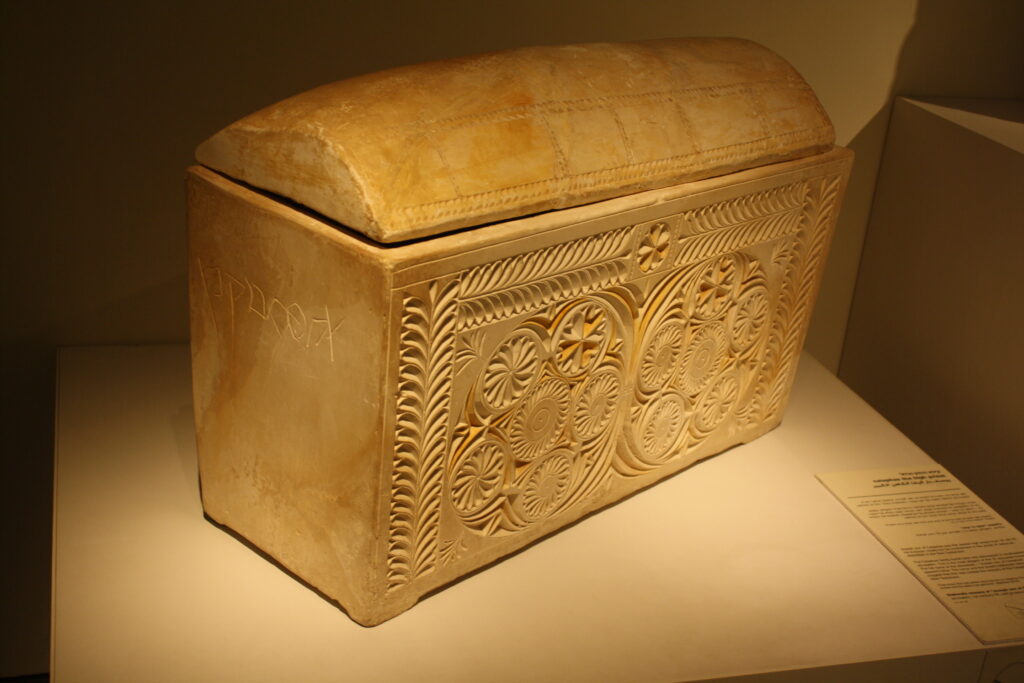Do Archaeology and Astronomy Support the Historical Crucifixion of Jesus?
Have you ever questioned if Jesus was really put to death and resurrected some 2,000 years ago? Outside the Bible, is there any evidence that supports his historical crucifixion? Or are the crucifixion and resurrection only some ancient version of today’s deepfakes?
Despite growing up in Christian schools, I had assumed for decades that the Easter celebration was only about bunnies and eggs, and yes, the long spring break. Oddly, I was not able to associate Easter with the biblical story. And I had thought that the crucifixion and resurrection were just another fictional story. However, nothing proved more rewarding than doing my own research. This article explores archaeological, historical, and astronomical sources outside of the Bible relating to the crucifixion of Jesus. I hope you’ll see, as I did, an astounding agreement between the biblical and extrabiblical sources.

Non-Christian Historical Data
In a previous article (“Does Archaeology Support the Historical Birth of Jesus?”), I discussed that many contemporary scholars agree that Jesus was at least a real historical person who lived some 2,000 years ago (though there are still some opposing views).1 Within a few decades of Jesus’s life, renowned non-Christian scholars (many were his opponents) wrote to criticize or attack Jesus, thus ironically providing outside-of-the-Bible confirmation about his birth and life. Interestingly, they also wrote to provide records about his crucifixion:
- Flavius Josephus (AD 37–100): Josephus was the most famous first-century historian. He recorded that Pilate had condemned Jesus to be crucified (Josephus, Antiquities of the Jews).2
- Lucian (AD 125–180): Lucian was a Roman who enjoyed mocking Christians. To him, it was humorous that Christians would worship a man who had been crucified (Lucian, Death of Peregrinus).
- Celsus (second century): An opponent of Christianity, Celsus wrote that Jesus returned from Egypt to Judea and proclaimed himself God (Contra Celsum, 1.28). He also described that Jesus was nailed to a cross (Celsusin Origen, Contra Celsus).
- Thallus (AD 50): The darkness at the time of the crucifixion was described in Histories written by Thallus, referring to the darkness as an eclipse (Thallus, recorded in Julius Sextus Africanus ca. AD 220).
- Pliny the Younger (AD 61–113): Pliny wrote to Emperor Trajan around AD 112 about his trials of accused Christians. He described Christians meeting on Sunday, singing hymns, and worshipping Christ as God (Pliny the Younger, Letter to Trajan).
- Babylonian Talmud (fifth century): The Talmud recounts that Jesus practiced sorcery, was hanged on the eve of the Passover, and that anyone knowing his location should inform the Sanhedrin in Jerusalem. Presumably, they were unable to find his body after his resurrection (Sanhedrin 43a).
The irony is striking. These writers were non-Christians of the first and second centuries. By mocking or criticizing Christians, they produced some of the most credible extrabiblical records that attest to the historical crucifixion of Jesus.
Archaeological Data
In the fifteenth year of the reign of Tiberius Caesar—when Pontius Pilate was governor of Judea, Herod tetrarch of Galilee, his brother Philip tetrarch of Iturea and Traconitis, and Lysanias tetrarch of Abilene—during the high-priesthood of Annas and Caiaphas, the word of God came to John son of Zechariah in the wilderness. (Luke 3:1–2)
This biblical statement is packed with historical information. The stated political figures corroborate extrabiblical sources with their years shown in figure 2:3 (1) Caesar Tiberius succeeded Augustus and reigned in AD 14–37, making AD 29 his fifteenth year. (2) Pontius Pilate was in power from AD 26 until he was removed from his position in AD 36. (3) Herod Antipas became the tetrarch of Galilee when his father Herod the Great died in 4 BC. He stayed in power until AD 39. (4) Herod Philip (Antipas’s brother) became a tetrarch in 4 BC and died in AD 34. (5) Lysanias’s years are still being investigated (see below). (6) Annas is known as the “perpetual high priest” who started his high priesthood in AD 6 and remained influential until AD 36 or after. (7) Joseph Caiaphas was Annas’s son-in-law and was the high priest from AD 18–36.

These historical data demonstrate that the year that Luke 3:1–2 refers to is probably AD 29, at which time the aforementioned John baptized people. Additionally, both Matthew 3:13 and Luke 3:21 record that John baptized Jesus, thus showing that Jesus probably started his ministry in or after AD 29. Furthermore, John 2:20 states that “it has taken forty-six years to build this temple.” According to Josephus, the temple remodeling begun by Herod the Great was completed around AD 27 to 29, thus lending further support to John 2:14 about Jesus being in the temple courts.

Pilate Stone
For many years, accounts about Pilate could only be found in the Bible as well as in Philos, Tacitus, and Josephus’s writings. There was no concrete archaeological evidence that Pilate ever existed, thus giving skeptics room to doubt the Bible. However, in 1961, Italian archaeologists found a piece of limestone in the ruins of a sports stadium near Caesarea. Now known as the Pilate Stone, its inscription shows that he was the prefect of Judea.

Caiaphas Ossuary
Skeletal remains of six individuals were found inside an ossuary (a type of storage for bones) near Jerusalem, with an inscription reading “Joseph, son of Caiaphas.” The burial date was determined to be between AD 43 and 70 because (a) an AD 43 coin was found inside the ossuary; and (b) ossuaries were known to cease appearing in Jerusalem after its destruction in AD 70. This time frame appears to fit the priesthood of Caiaphas, who played a key role in charging Jesus with blasphemy and treason.

Lysanias Inscription
Greek inscriptions were discovered carved into a rock hill along a road in Abila (northern Jordan). The inscriptions contain the phrases “August lords” and “Lysanias the tetrarch.” According to Professor Titus Kennedy of Biola University, “August lords” is thought to be a title for Caesar Tiberius and Empress Livia, who died in AD 29. Thus, Lysanias’s time frame referred to by Luke 3:1–2 is established.
Crucifixion Date
Evidences outside the Bible, including historical documents and archaeological artifacts, appear to agree with Luke 3:1–2, which is illustrated in figure 2. Jesus started his ministry, probably in AD 29 or after, and was crucified sometime later. While knowing the exact date of his crucifixion is not ultimately important (much more important is why he died), one may still wonder what year he was crucified. In other words, are there any other data to further pinpoint his crucifixion date?

Execution of Sejanus
As the prefect of the Praetorian Guard, Sejanus was accused of plotting against Caesar Tiberius. Sejanus and many of his associates were executed, starting on October 18, AD 31. It put Pilate in a delicate position because he was also closely associated with Sejanus. When the Judeans told Pilate that if he released Jesus he would be no “friend of Caesar,” Pilate understood the threat to his life. Known to be a cruel and overbearing leader, he uncharacteristically caved in to the demand of the Jews to execute Jesus. This historical context suggests that Jesus was crucified after AD 31.
Three or Four Passovers
Most scholars agree with the Gospel of John that there were three or four Passovers (including the crucifixion Passover) during the ministry of Jesus. Thus, Jesus’s ministry should have lasted at least two or three years. Even if Jesus started his ministry as early as AD 29, his crucifixion would probably be no earlier than AD 31.
Astronomical Calculations
Establishing the precise date of any ancient event is known to be extremely difficult. Nevertheless, scientists have attempted to help determine the crucifixion date. Ancient Jews used the lunar calendar in which a new month starts with the new Moon. Their Passover meal commenced at sunset at the start of the fifteenth day of the Jewish month of Nisan. Scholars generally believe that the crucifixion occurred on Nisan 14 or 15 on either Thursday or Friday. By using astronomical calculations of the new Moon, a group of scientists identified three possible years for the crucifixion: AD 27, 30, and 33. Taking historical, archaeological, and biblical data into account, they identified AD 33 as the most plausible year, specifically April 3, AD 33.4
It does not bother me at all that scientists are still not 100% certain about the crucifixion date. I was right next to my father when he died in the hospital. When the doctor came to officially certify his death, it was already after midnight on the next day. Fifty years from now, my father’s great grand children will probably be uncertain about the date of his death. Does the exact date matter?
Compelling Evidence
At least five strands of evidence provide a compelling cumulative case that Jesus was crucified some 2,000 years ago. First, all four Gospels record the crucifixion. Second, the mocking comments written by many of Jesus’s opponents about his crucifixion provide some of the most powerful evidence that indeed he was crucified. Third, the historical context described by Luke 3:1–2 appears to be highly compatible with records and dates documented outside the Bible. Fourth, archaeological artifacts lend strong support to both biblical and extrabiblical descriptions of the events surrounding his crucifixion. Finally, while nobody knows for sure the exact date of any ancient event, astronomical calculations of the new Moon suggest that the crucifixion probably occurred in AD 33.
While modern science and archaeology support the crucifixion of Jesus as a historical event, the Bible provides ample evidence to explain why Jesus was born, lived, crucified, and resurrected. He accomplished atonement for sin on behalf of those who place their trust in him.
Acknowledgment
The author is indebted to Dr. Titus Kennedy, who is a professor at Biola University and a professional field archaeologist. His insight and guidance have contributed greatly to this article.
Endnotes
- Kenneth Richard Samples, God among Sages: Why Jesus Is Not Just Another Religious Leader (Grand Rapids, MI: Baker Books, 2017); Robert M. Price, The Christ-Myth Theory and Its Problems (Cranford, NJ: American Atheist Press, 2011).
- Flavius Josephus, Antiquities of the Jews: English Translation (Kindle ed. S.l.:True Sign Publishing House, 2021).
- Titus Kennedy, Excavating the Evidence for Jesus: The Archaeology and History of Christ and the Gospels (Eugene, OR: Harvest House Publishers, 2022); John McRay, Archaeology & the New Testament (Grand Rapids, MI: Baker Academic, 1991).
- Colin Humphreys, “The Last Days of Jesus in John and the Synoptics: The Evidence from Astronomy and Chronology,” in: Paul N. Anderson, Felix Just, S. J., and Tom Thatcher, eds. John, Jesus, and History, Volume 3, Glimpses of Jesus through the Johannine Lens, (Atlanta, GA: SBL Press, 2016).






